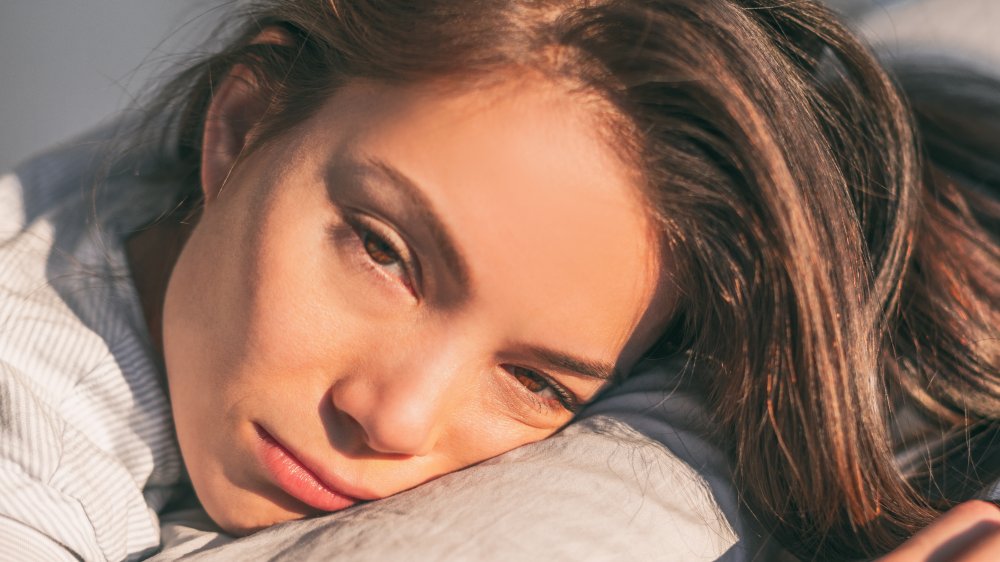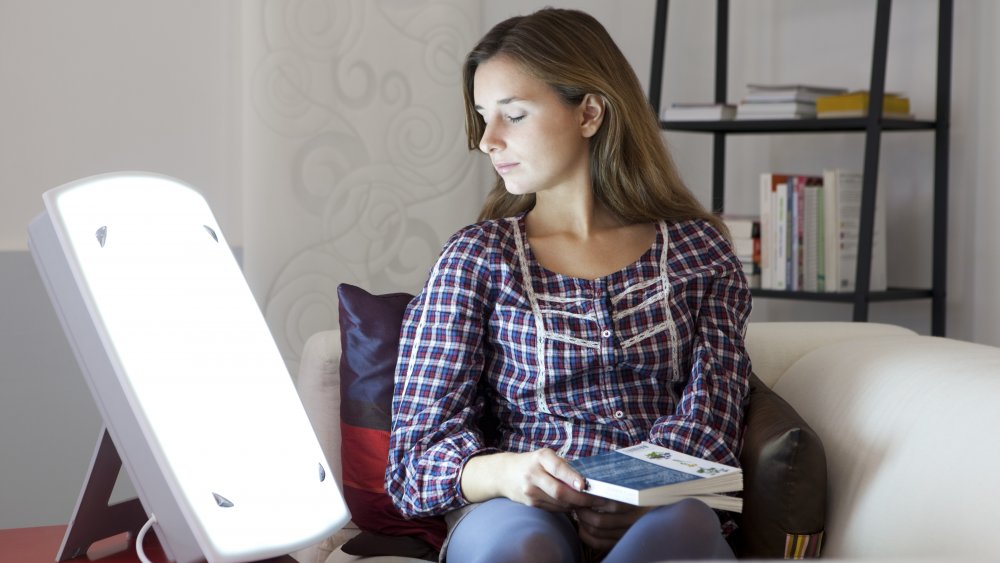What Is Light Therapy And What Are Its Benefits?
It may be hard to imagine how sitting next to a bright light can make you feel better, but that's exactly what you can expect with light therapy. One mental health expert at Harvard says a session usually involves having someone sit next to a light box that provides 10,000 lux worth of light — which means the light box is 100 times brighter than indoor lighting. That might sound like a lot, but a bright sunny day is usually 50,000 lux. Plus, those that sit next to the box don't have to look directly into the light — they can spend that time reading or working for just 30 minutes each time.
You might wonder what the point of that might be, but the treatment is legit. Light therapy was originally intended to treat people who are suffering from seasonal affective disorder (SAD), also known as winter depression, which strikes as winter approaches and when the days get shorter. The change in seasons can affect some of us so badly that they get depressed, losing energy and the ability to concentrate. Some even find feelings of worthlessness set in, and end up eating more sugar and high-carbohydrate comfort foods to try and feel better. When springtime comes and these feelings diminish, those who suffer from Seasonal Affective Disorder could also end up overweight and out of shape (via Harvard).
Light therapy has few side effects
While Seasonal Affective Disorder can be kept at bay with an antidepressant, light box therapy might be a better option because it has few side effects. For those who might suffer from deep depression, light box therapy can also boost the effects of an antidepressant so lower doses are needed to make the medication work. Today, light therapy is also used to treat other health and lifestyle-related problems, including sleep disorders, jet lag, and dementia (via Mayo Clinic).
But light therapy isn't for everyone as there can still be minor side effects — those who undergo the treatment can suffer from eyestrain, headaches and nausea; you may also suffer from SAD but have a sensitivity to light, making you an unsuitable candidate for light therapy. As with all treatments, alternative and conventional, talking to a healthcare professional is a good idea before trying light therapy (via Mayo Clinic).

